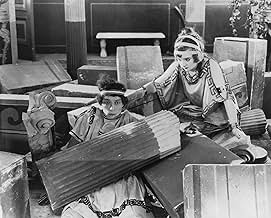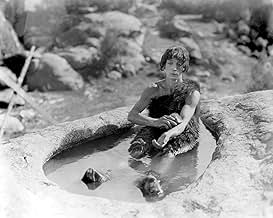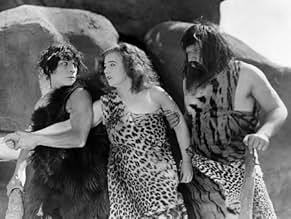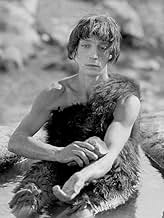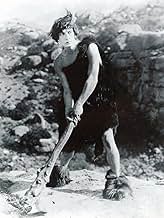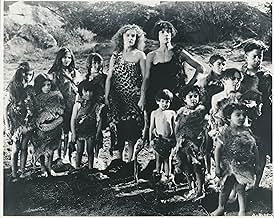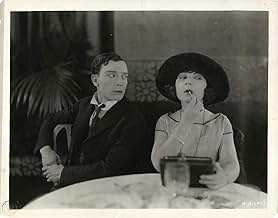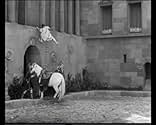IMDb RATING
7.0/10
5.6K
YOUR RATING
The misadventures of Buster in three separate historical periods.The misadventures of Buster in three separate historical periods.The misadventures of Buster in three separate historical periods.
- Awards
- 1 nomination total
Kewpie Morgan
- The Emperor
- (as Horace Morgan)
- …
Lionel Belmore
- Undetermined Role
- (unconfirmed)
- (uncredited)
Bernard Berger
- Roman-age child
- (uncredited)
Basil Bookasta
- Stone Age Child
- (uncredited)
George Bookasta
- Stone Age Child
- (uncredited)
George Davis
- Roman Guard Knocked Down
- (uncredited)
Louise Emmons
- Old Fortune Teller
- (uncredited)
F.F. Guenste
- Butler
- (uncredited)
Blanche Payson
- The Amazon
- (uncredited)
Featured reviews
The more time I spend with old films, the more of a giant I see Keaton to be. I'm beginning to think that we all need to see a lot of him, which is why I wandered into this. It seems to have been made only because they had access to a Roman set.
The setup is that a courtship story is presented in three eras: a cave-man setup, a Roman context and a modern one. All are based on film notions of those eras of course. Unlike most movie humor of the time, the joke here isn't in embellishing the story with humorous decoration. Its in the difference among the stories.
Its a clever piece of what I call folding, and you will see at least one scene here that I swear is quoted in "Rashomon."
So there's the idea of the thing, which is worthwhile, but now I've explained it, you hardly have to see it. The jokes are trite. But there is one scene that I recall over and over. I think Keaton did it elsewhere and several others too, but here it is the best.
He's driving a car, a rickety one to his girl's house. (This is in the modern setting, obviously.) He hits a bump and the car falls to pieces. And I just don't mean the wheels fall off, the car quite literally disassembles into the parts that went into the factory and there he sits among hundreds of items. I have no idea how he did this. The car really is moving as a car, and then in an instant it is in pieces.
Wonderful.
Ted's Evaluation -- 3 of 3: Worth watching.
The setup is that a courtship story is presented in three eras: a cave-man setup, a Roman context and a modern one. All are based on film notions of those eras of course. Unlike most movie humor of the time, the joke here isn't in embellishing the story with humorous decoration. Its in the difference among the stories.
Its a clever piece of what I call folding, and you will see at least one scene here that I swear is quoted in "Rashomon."
So there's the idea of the thing, which is worthwhile, but now I've explained it, you hardly have to see it. The jokes are trite. But there is one scene that I recall over and over. I think Keaton did it elsewhere and several others too, but here it is the best.
He's driving a car, a rickety one to his girl's house. (This is in the modern setting, obviously.) He hits a bump and the car falls to pieces. And I just don't mean the wheels fall off, the car quite literally disassembles into the parts that went into the factory and there he sits among hundreds of items. I have no idea how he did this. The car really is moving as a car, and then in an instant it is in pieces.
Wonderful.
Ted's Evaluation -- 3 of 3: Worth watching.
This is a pleasant and funny combination of slapstick and satire, period humor and romantic comedy. It does not have quite the number of sustained chase/stunt sequences as in most of Keaton's features, but instead there are a lot of fine subtle gags of all different kinds.
In each of the "Three Ages", Buster and Wallace Beery vie for the affections of the same woman, with amusing and unpredictable results. The simple romantic triangle theme sets up a lot of good material, on the one hand lending itself to a lot of gags about the unchanging nature of romantic courtship, and on the other hand being used for a lot of deliberate anachronisms that are often extremely funny. Beery makes a nice foil for Keaton, and the girl's parents also have some good moments.
This one usually gets lost in the crowd among so many brilliant Keaton masterpieces, but it works very well and is definitely worth seeing for any fan of silent comedy.
In each of the "Three Ages", Buster and Wallace Beery vie for the affections of the same woman, with amusing and unpredictable results. The simple romantic triangle theme sets up a lot of good material, on the one hand lending itself to a lot of gags about the unchanging nature of romantic courtship, and on the other hand being used for a lot of deliberate anachronisms that are often extremely funny. Beery makes a nice foil for Keaton, and the girl's parents also have some good moments.
This one usually gets lost in the crowd among so many brilliant Keaton masterpieces, but it works very well and is definitely worth seeing for any fan of silent comedy.
Loosely intended as a satire of D.W. Griffith's Intolerance, The Three Ages was Buster Keaton's first attempt at a full length comedy feature. The only similarities to Intolerance are the opening "book" scene and the fact that similar stories through the ages are edited together into a complete film. Keaton's reasoning for appropriating this style was that if it didn't succeed as a feature film, it could be reduced to three two-reelers. Fortunately, The Three Ages succeeds brilliantly as a comedy and contains some of the funniest routines I've seen in any of Keaton's film. There is nothing unique or daring about the story lines. They are simple boy-meets-girl, boy-loses-girl, boy-gets-girl plots, but the period satires are riotous and set the standard for future works by Mel Brooks and all films of this genre. However, I don't believe that anyone has ever topped this comedy. No one can play the lovable goof like Keaton and the stunts in this film are some of his best. In addition, Wallace Beery's appearance as Keaton's rival adds to this film's appeal. Anyone who thinks that comedy from the 1920's cannot be appreciated by modern audiences needs to see this movie.
Although the movie is clearly dated, audiences can still easily identify with the plight of hapless Buster in this timeless and very funny underdog tale. Buster fights against unkindly odds in three different ages: the Stone Age, The Roman Age, and the Moden Age, playing almost the same character with just a change of scenery to help us identify the different "ages". In this movie we see one of the earliest comedic depictions of the "caveman" stereotype, who wins his love not by romance but by brute force, as well as a funny twist on Roman gladiatorial combat, two comedic sketches that long predate such spoofs as Mel Brooks' "History of the World: Part I". The underlying theme of the movie is simple yet convincing: Although the times may have-a-changed, we still face the same struggles even in modern times that we fought in prehistoric times in order to "win the girl" (keep in mind this is the theme of 1923 America, a time when chauvinism was still en vogue). It is interesting to look at this movie over eighty years later, and consider how dramatically things have changed from this movie's "modern times" to now.
First time of seeing Buster Keaton's first feature film and I have to admit I liked it a lot and only wish I'd stumbled across it years ago. The Rohauer blurb at the start warns that the Three Ages single nitrate print was rediscovered and salvaged in 1954 just in time before combustion, and many frames that seemed hopelessly glued together were separated. So, it's rocky viewing in places, but I've seen and survived much worse.
It would have been OK as the 3 short films but as a take on Intolerance it's inventive and funny from the start to the finish: In the Stone Age with baddie Wallace Beery riding an elephant and goodie Buster riding a pet brontosaurus; In the Roman Age Buster riding a chariot with wheel locks and adapted for sledging, No Parking signs in Latin; In this technological Age of Speed Need and Greed his car beautifully falls to bits at the first hump. Both him and Beery are after the Girl through the ages, a never ending tussle. Favourite bit: As the caveman he gets knocked backward over a cliff edge but still blows a kiss to the camera - an amazing second or two!
Great stuff, reaffirming my love of silent film comedy.
It would have been OK as the 3 short films but as a take on Intolerance it's inventive and funny from the start to the finish: In the Stone Age with baddie Wallace Beery riding an elephant and goodie Buster riding a pet brontosaurus; In the Roman Age Buster riding a chariot with wheel locks and adapted for sledging, No Parking signs in Latin; In this technological Age of Speed Need and Greed his car beautifully falls to bits at the first hump. Both him and Beery are after the Girl through the ages, a never ending tussle. Favourite bit: As the caveman he gets knocked backward over a cliff edge but still blows a kiss to the camera - an amazing second or two!
Great stuff, reaffirming my love of silent film comedy.
Did you know
- TriviaThe most famous stunt in the movie was actually built around what went wrong with the original stunt. Buster Keaton intended to leap from a board projecting from one building onto the roof of another building, but he fell short, smashing into the brick wall and falling into a net off-screen. He was injured badly enough to be laid up for three days. However, when he saw the film (the camera operators were instructed to always keep filming, no matter what happened), he not only kept the mishap, he built on it, adding the fall through three awnings, the loose downspout that propels him into the firehouse and the slide down the fire pole.
- GoofsIn the medium shot of the Stone Age soothsayer scene, Buster's hands are resting together near the side of the turtle. But in the cut to a close-up, we see only a hand double's right hand, and it's directly in front of the turtle's mouth. (It's clearly a hand double, since Keaton was missing his right index finger tip.)
- Alternate versionsIn 1995, Film Preservation Associates copyrighted a version with an orchestral score; no details were specified on the print.
- ConnectionsEdited into The Golden Age of Buster Keaton (1979)
- How long is Three Ages?Powered by Alexa
Details
- Release date
- Country of origin
- Language
- Also known as
- Three Ages
- Filming locations
- Production company
- See more company credits at IMDbPro
Box office
- Gross worldwide
- $177
- Runtime
- 1h 3m(63 min)
- Color
- Sound mix
- Aspect ratio
- 1.33 : 1
Contribute to this page
Suggest an edit or add missing content

